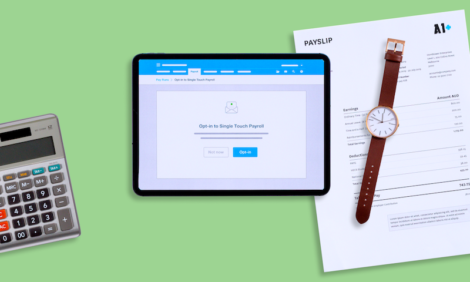
How your business can become Single Touch Payroll compliant in three easy steps

As a small business owner it often seems like there aren’t enough hours in the day. And the struggle to stay on top of things is likely all too familiar.
With the ATO now requiring all businesses in Australia to digitally report their payroll information through Single Touch Payroll (STP), you may be finding it tricky to get your head around the latest changes.
Single Touch Payroll made simple
STP is a new way of reporting that requires you to send your employee salaries, wages, PAYG withholdings and superannuation to the ATO with each pay run. With the compliance deadline of 30 September having now passed, it’s time for business owners not yet compliant to visit their trusted accountant, bookkeeper or BAS agent – so you can work through what you need to do to meet your STP obligations.
Often described as the biggest legislative change to impact businesses since the GST was introduced, STP presents a huge opportunity for the nation’s 2.3 million small businesses.
Research conducted by Xero in February this year found that one in five small businesses were still using pen and paper to manage their payroll, likely contributing to the nearly two million payroll errors made every year.
By making the move to online accounting software, you won’t just discover a decrease in errors and an increase in time and employee satisfaction: you’ll gain back the time to do more of what matters.
But it’s not just your business that will benefit. As STP removes the requirement for payment summaries altogether, the ATO will now make this information available to employees online through their individual myGov accounts. Not only will this provide them with everything they need to complete their tax return (making tax time quick and easy), but it will provide them with increased visibility thanks to real time reporting.
Finding the right solution to support your business
While STP might be a big change, with the right support, you’ll be ready to go by September 30. As a first step, reach out to your trusted advisor and have a thorough discussion about all things STP. They’re here to help you to understand what these changes mean and how your business can get on board.
Once you’re ready to make the switch, becoming STP compliant is simple as three easy steps:
1. Find out who is processing payroll for your business
According to research by Xero, more than 60 percent of small business employers process staff payroll themselves. If this sounds like you then you will need to enable STP as a business owner within your software, and send your payroll data to the ATO each time you process payroll.
If you rely on your accountant or bookkeeper to process and pay your staff each pay run then they can enable STP on your behalf instead.
2. Make sure your software is up to date and STP ready
The only way to report STP is from up-to-date enabled software – so make sure you’re ready to go.
3. Check your employee details before turning on STP
Double check that you have the correct details for your employees – tax file numbers, date of birth, bank account details, superannuation details etc. Your payroll and employee data will be sent to the ATO with each pay run, so it’s a good idea to make sure everything is up to date.
Wherever small businesses are in the digital journey, working with an accounting software provider or trusted advisor ensures they will have the support and resources at hand to be compliant and start realising the benefits of STP.
Businesses across Australia need to comply with Single Touch Payroll by September 30. Xero lets you file your pay runs with the ATO and getting set up is a lot easier than you might think – so get STP compliant today in just a matter of clicks.
This post first appeared in the Australian Business Forum Bulletin.
The post How your business can become Single Touch Payroll compliant in three easy steps appeared first on Xero Blog.
Source: Xero Blog






